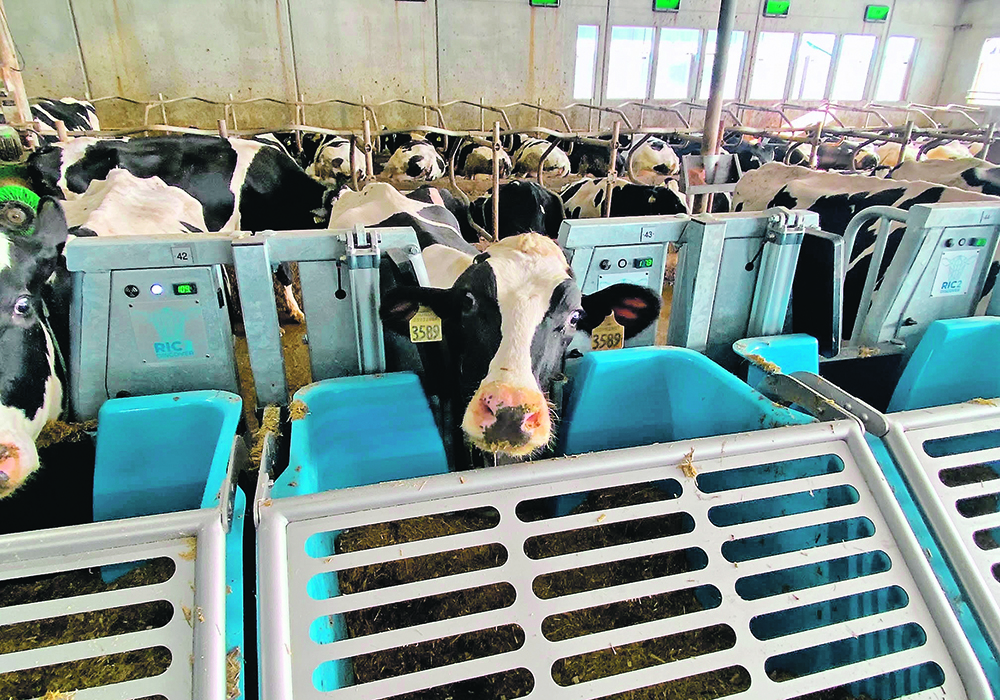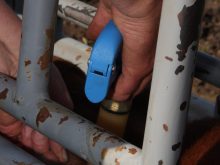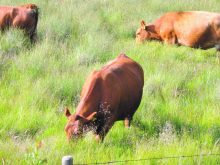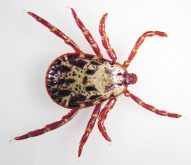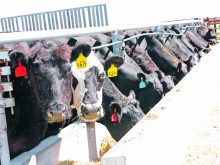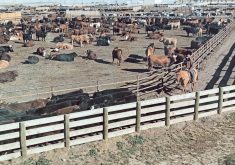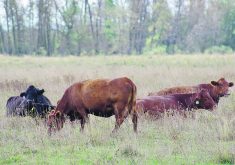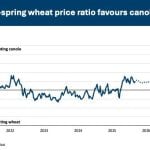Companies receive climate action award for their work in helping develop a way to select cattle that produce less methane
CALGARY — Canadian research that sparked the world’s first official genetic evaluation program to help dairy farmers reduce methane emissions from Holstein cattle without harming milk production has earned an international award for climate action.
“The award has been a real team effort, and it’s something that didn’t just come by chance,” said Filippo Miglior, senior adviser for genetic strategic initiatives at Lactanet.
Related stories:
- Alta. dairy farm invites the public for breakfast
- VIDEO: Visit to a dairy barn goes virtual
- Beef sector faces genomic roadblocks
- New research projects focus on genomics
- Project creates one-stop genetics database
Read Also

Beef cattle more prone to trace mineral deficiencies
The trace mineral status of our cows and calves is a significant challenge for western Canadian producers and veterinarians.
“You’re able to get in terms of results today from this research — and to be able to have a tool like that — because 10 years ago, we had the wisdom to invest in this area.”
The International Dairy Federation Award for Innovation in Climate Action was given to Lactanet and Semex for their work helping develop the Methane Efficiency Evaluation, which became available in April. It allows dairy farmers to select genetic traits in Holstein cattle that could cut methane emissions by as much as 20 to 40 percent by 2050 while maintaining or even increasing milk production, said Miglior.
Although he estimated the annual decrease in methane will be about 1.5 percent, he likened the breeding process to a small amount of interest compounded each year on both an initial investment of money and the accumulated interest payments.
“And so, the earlier we start, like any investment, the more you will see later on in terms of response.”
Methane has been described by the United Nations Environment Programme as being about 80 times more potent as a greenhouse gas than carbon dioxide during the first 20 years after it is released. Dairy Farmers of Canada has committed to reaching net-zero greenhouse gas emissions by 2050.
Miglior, who is also an adjunct professor at the University of Guelph, said the research might also be applied to other dairy and beef breeds. A new $16.2 million project by Genome Canada that will leverage genomics to achieve dairy net zero will include beef data from research partners in Ireland and Australia, he said.
Although he described dairy cattle as “different beasts, let’s be frank, in comparison to a beef animal,” they are both ruminants. “So, if some of the knowledge on the dairy cow, we can transfer to the beef, it’s going to be done in this project.”
The research identifying the traits that control the production of methane in Holstein cattle was co-led by scientists at the University of Alberta, University of Guelph, University of British Columbia and Universite Laval in Quebec. About $23 million in total funding was provided for a series of research projects, including $7.6 million from Genome Alberta through Genome Canada.
More than $1.7 million of the funding was also provided by Alberta’s Results Driven Agriculture Research agency (RDAR), with $725,000 shared by the federal and provincial governments through the new Sustainable Canadian Agricultural Partnership. “Through genomics, we’ve achieved amazing improvements in the production traits of dairy cattle, specifically milk, fat, protein and the opportunity to improve other contributing factors to sustainability and profitability,” said RDAR chair David Chalack.
Dairy producers partnered with scientists during the development stage to test and verify methane emission reductions within the breeding programs on their farms. They included Sunalta Farms near Ponoka, Alta., which is co-owned and co-managed by RDAR director JP Brouwer.
“And we are just a regular commercial dairy, which is really nice in terms of industry application, but the big thing is myself, I’ve always been quite intrigued by dairy research,” he said about testing that included feed efficiency.
“I see it as the way that our industry advances, and this particular project was quite a heavy hitter in terms of making a dent in not only the climate change concern that people have, but making animals more feed efficient, which is just better for production, profitability for the industry and just general efficiency for the consumer as well because if we can produce cheaper, then consumers are able to purchase cheaper.”
Many consumers will likely be surprised by the high level of science and technologies such as automation and robotics that are put into practice by dairy farmers in Canada, said Brouwer.
“We make gains because of all the work that we build on here … and it just shows that investment in research needs to be a small background, ongoing mechanism that continues to push the industry forward,” he said.
“Our consumers are demanding more from us, and our costs have to be the same, so how are we going to manage that? And the only way is through innovation and research, in my mind.”
Miglior said although selection for traits that reduce methane production is also possible in ruminants such as sheep and goats, such sectors tend to be less organized than the dairy industry.
“All these tools, and I’m going to be frank for you, we can have an impact in Canada, the U.S., Europe, Australia, New Zealand — these major developed countries.”
He pointed to countries such as India, which has about 220 million cattle.
“The biggest challenge we have is how we transfer from the dairy from the well-developed nations to the countries that have 220 million cows, and the largest number of goats is in Asia as well, so how are we going to have an impact?”


